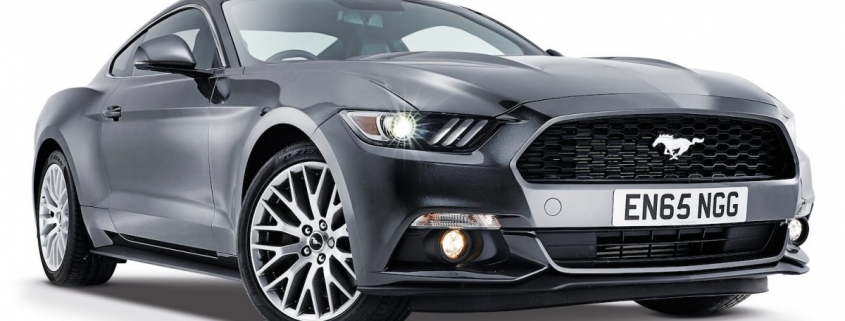Is a New Mustang GT the Best Option for Cheap Performance?
Enthusiasts sometimes herald the Ford Mustang GT as one of the best options for cheap performance. At $36,000, 460 naturally aspirated horsepower spinning the rear wheels with a limited-slip differential is hard to beat. However, there are cheaper options that get even more power. Some of these options exist within the Mustang family, they just require some creativity in order to surpass the GT.
Ecoboost Mustang
The base model Mustang comes with a 2.3-liter turbocharged inline-four, that makes 310 horsepower. It’s way down on power compared to the GT, however, tuners are able to extract significant gains with just a few upgrades. Brand new Ecoboost Mustangs start at $27,000, already $11,000 cheaper than the GT. Buying a used Ecoboost and fitting these upgrades could see a tremendous increase in power.
Driving Line outlines a tuner’s progression, which started with the Ecoboost making 276 horsepower a the wheels stock. They made 372 horsepower with a cold air intake, an aftermarket downpipe, an intercooler from Mishimoto, and a tune on stock internals. According to dyno tests, the stock GT makes 415 horsepower at the wheels, so it wouldn’t take much more to put the EcoBoost within range.
2011-2014 S197 Mustang GT

Starting in 2005, Ford released the S197 Mustang. It had the same single overhead camshaft V8 from the later SN95s but had more horsepower. After the 2010 facelift, Ford gave the Mustang a new V8, with dual overhead camshafts, bigger displacement, and 412 horsepower.
This was the first iteration of the Coyote engine, which was released with the 2011 Mustang GT. By 2014 the GT had 420 horsepower. 2011-2013 model years are selling in used markets for $20,000 and under, making them even cheaper than the Ecoboost.
Modding these Mustangs can be as easy as installing a new ECU for $400, or a cold air intake for $300. Going nuclear means getting a supercharger, which is available for around $6,000. The Roush Phase 2 supercharger kit costs $7,000 and can increase horsepower to 625.
If trying to stay carb-legal, Paxton makes a $7,000 supercharger for the 2011-2014 Mustang GT that makes 615 horsepower that is legal on the street in all 50 states. The S197’s used value, plus the supercharger is still $10,000 cheaper than a new Mustang GT, and more powerful.
1987 Fox Body Mustang GT

The iconic Fox Body chassis rescued the Mustang from mediocrity in 1979 and continued in the ‘80s with more powerful V8 options. In 1987 the engine made 225 horsepower from “5.0” liters, the most powerful Mustang since the early 1970s, following both oil crises. Ford made some good choices with this engine, including forged aluminum pistons (from 1985), and a roller rocker camshaft.
Owners report obtaining 500 horsepower out of the stock internals. Fitting a junkyard turbo to this engine would achieve substantial power gains, without having to change anything internal. Reliability, however, would need some reevaluation. Still, it’s one of the easiest cars to restore.
The Mustang GT is rightfully recognized as a cheap, aptly performing car, but doesn’t necessarily have the market cornered. There are lots of great options for cheap power, that is also street legal. Depending on how that power is obtained, reliability doesn’t have to be an afterthought.
RELATED: This Crude Video Might Be the Perfect Mustang Ecoboost Review
The post Is a New Mustang GT the Best Option for Cheap Performance? appeared first on MotorBiscuit.







